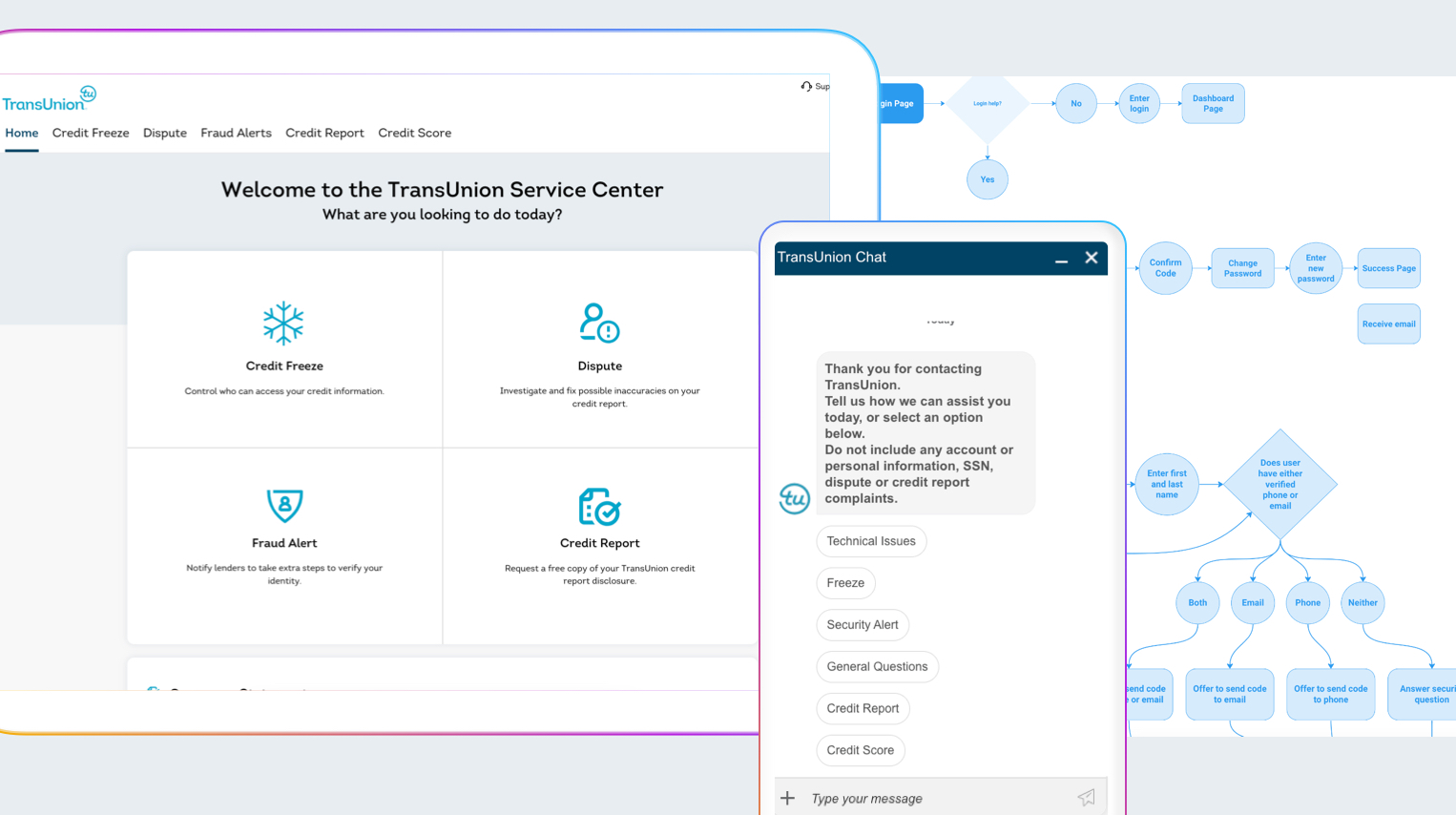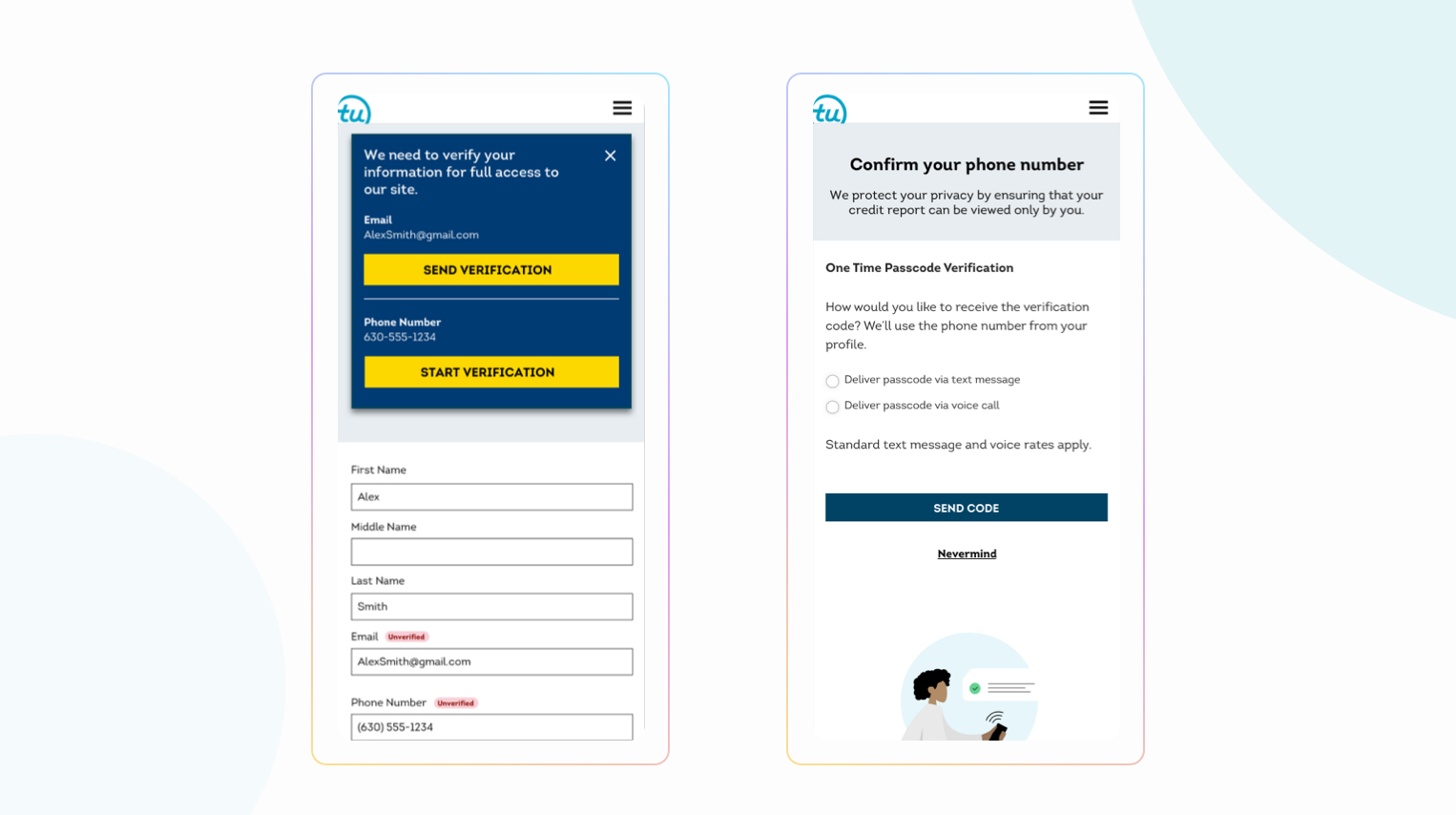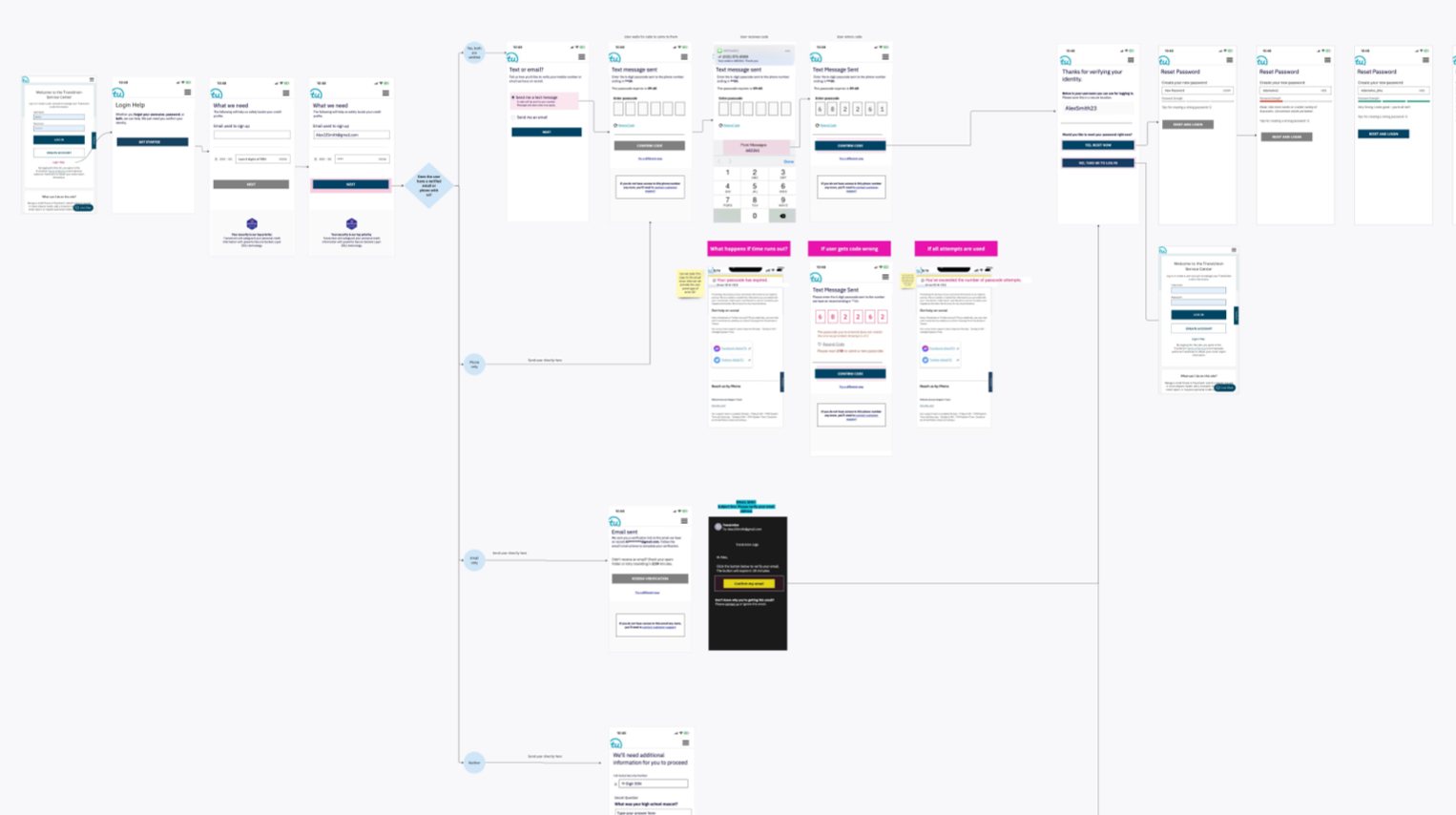
Reducing support cost with a revamped experience.
Objective: Redesign and modernize over a decade-old set of user flows that hinder consumers from completing essential account-related tasks—such as password resets, username retrieval, device verification, and self-service support—both within and outside the product experience.
Background: Our Service Center is a critical gateway for our direct-to-consumer business, serving over 20 million users quarterly who rely on it to manage their credit information. Given the highly regulated nature of our product, delivering a seamless and secure user experience is not just a priority—it’s a necessity. However, legacy systems and a historically product-centric culture at TransUnion have deprioritized foundational account access features like password recovery and device verification. This initiative marks a pivotal shift toward elevating these core experiences to best-in-class standards, empowering users to resolve issues independently without needing to contact support.
Addressing authentication issues that helped us save $250k/year and increase retention revenue by ~300k/year
Analysis revealed that approximately 10% of users were canceling their accounts due to login issues, with 18.3% reporting problems receiving verification codes, and 36% contacting support due to outdated email information. These friction points not only impacted user satisfaction but also drove unnecessary volume to our contact center.
To address this, we implemented a proactive verification flow that prompts users to confirm or update their mobile number and email address during key interactions. This enhancement enables faster resolution of future account access issues—such as password resets or device verification—without requiring a phone call, ultimately improving user retention and reducing support costs.

Improving forgot username and password flows saved us $5mm/year
Beyond authentication challenges, we uncovered significant friction in core account recovery flows. A large portion of users opted to call support rather than reset their password digitally, indicating a lack of confidence or clarity in the existing experience.
Username-related issues accounted for 41% of all Account Access problems (often overlapping with password issues).
––––––
Password-related issues made up 45%, further highlighting the need for a streamlined and intuitive recovery process.
Notable quotes included: “Honestly, I really don’t remember which username I used. Normally I use DShark91…” “I cannot for the life of me remember my password or secret question, and so I need to write this stuff down, don’t I?”
These insights helped us prioritize improvements to username recovery, password reset flows, and the overall clarity of account access steps—reducing reliance on support and improving user confidence in self-service options.
